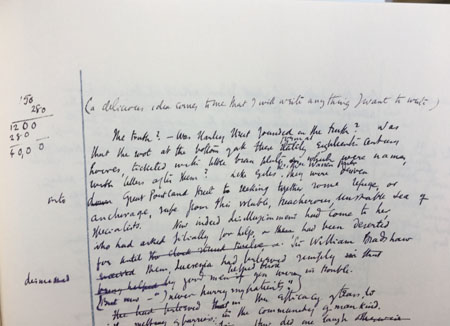I’ve been meaning to read this novel for quite some time. Firstly, I have a particular interest in stories about communal life since I came close to joining a commune when I was a teenager. Hawthorne based the novel’s intentional community of Blithedale on the real utopian farming commune Brooke Farm which Hawthorne helped to establish (although apparently he didn’t adhere too strongly to its values.) Secondly, the second novel in Joyce Carol Oates’ Gothic Quintet is called “A Bloodsmoore Romance”. I’m not sure if Oates’ book plays upon Hawthorne’s novel at all (other than in its title) but I figured it’s best to read the classic novel first. Perhaps my motivations for reading this novel slightly soured my experience of it because the story is more Romance than it is about the actual community of Blithedale.
It begins with its narrator Miles travelling to the newly founded intentional community of Blithedale in the dead of winter. He’s a poet so isn’t accustomed to the rigorous work of agricultural life which meets him when he gets there. Like many well-meaning intellectuals who go to found alternative societies, he quickly finds the practicalities of the enterprise overwhelm him: “we had pleased ourselves with delectable visions of the spiritualization of labor… matters did not turn out quite so well as we anticipated.” Therefore, it’s quite funny he quickly becomes ill and spends all his time in bed rather than working the fields or milking cows. But few details are given about the structure of the community or its core values. Instead the story becomes consumed with a beautiful resident named Zenobia who always has an exotic flower in her hair as well as a mysterious young woman named Priscilla who arrives. The novel primarily concerns the mysterious backstory of these women’s lives and Miles rivalry with a philanthropist and fellow resident Hollingsworth.
The tone of the story felt quite uneven because it strays into a slightly gothic or supernatural territory with legends about a veiled lady and tragic family histories conveyed. But then it will diverge into debates about certain philosophical ideas based on Transcendentalist theories or discussions about the rights of women. The dialogue involving ideas about the difference between the sexes was difficult to read because it makes so many old-fashioned generalizations. I felt the same way about reading “Summer Will Show” last year in how that novel makes such broad statements about Jewishness.
There were occasions when the novel would make an interesting statement which would stand out for me. I was particularly compelled by how he discusses people who devote themselves to a particular cause: “This is always true of those men who have surrendered themselves to an overruling purpose. It does not so much impel them from without, nor even operate as a motive power within, but grows incorporate with all that they think and feel, and finally converts them into little else save that one principle.” This feels very true in the way some people can let a certain ideology overtake everything about their identity so that they come to be defined only by this one idea or cause. This reminded me of the main character in the recent novel “Old Baggage” who is a feminist searching for meaning after her protest efforts help secure women’s voting rights.
I also found it difficult to engage with many of the book’s arguments because it seemed like they were riffing off from very specific concepts I wasn’t familiar with or parodying certain ideas like that of Charles Fourier. If you’re well versed in these theories this might have value but much of it felt like in-jokes which I couldn’t understand very well. The narrative also has a jerky momentum to it so I found it challenging at times to understand exactly what was happening or even the meaning of certain twists in the plot. After finishing the novel I even had to look up summaries online to explain some of the novel’s conclusions.
I felt very ambiguous about the narrator himself as well. He becomes so consumed with the trio of characters Zenobia, Priscilla and Hollingsworth that he drifts away from the Blithedale community to voyeuristically observe their interactions and untangle their histories. That’s why this novel felt like it was more about the romance aspect of the title than the commune. Perhaps that emulates many people’s experiences going to intentional communities like this where ideals gradually become completely subsumed in favour of the drama of interpersonal relationships. The trouble is this storyline didn’t feel very interesting to me and I’d have much preferred to read a novel like Susan Sontag’s “In America” where the dissolution of the utopian ideal is detailed in its physical breakdown as much as the social turmoil of its inhabitants. It’s haunting how Miles at one point feels like a ghost drifting on the outside of the community, but I had little sense of how the Blithedale eventually dissolved because the story was more consumed with melodramatic plotlines.
So I felt this was an interesting book, but not a very satisfying read. While I was reading this novel I tweeted about it and Joyce Carol Oates responded that I should read Hawthorne’s American Notebooks so, while I was engrossed in this novel at the beginning, maybe I should have switched books before getting tangled in Hawthorne’s uneven narrative.































